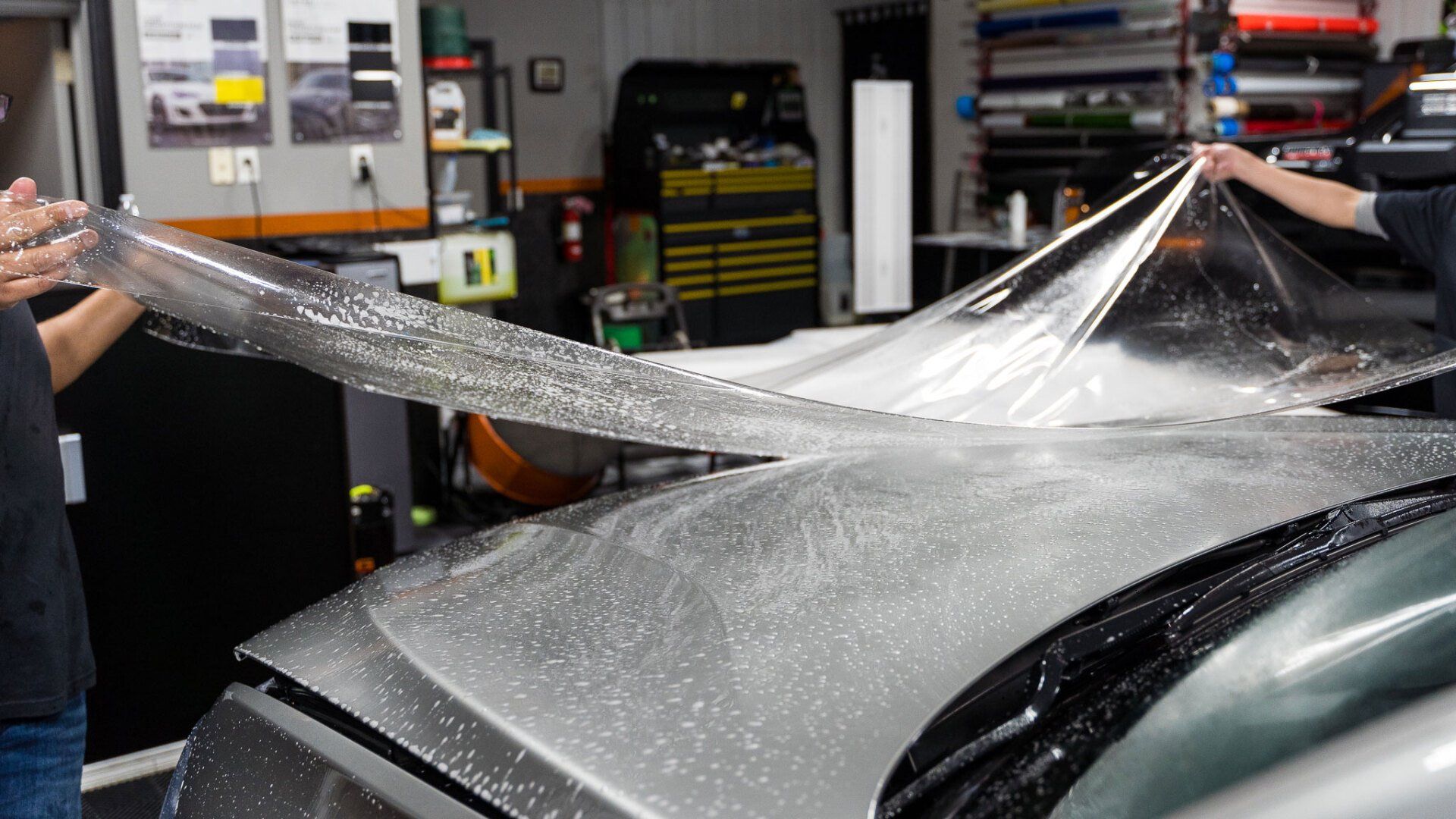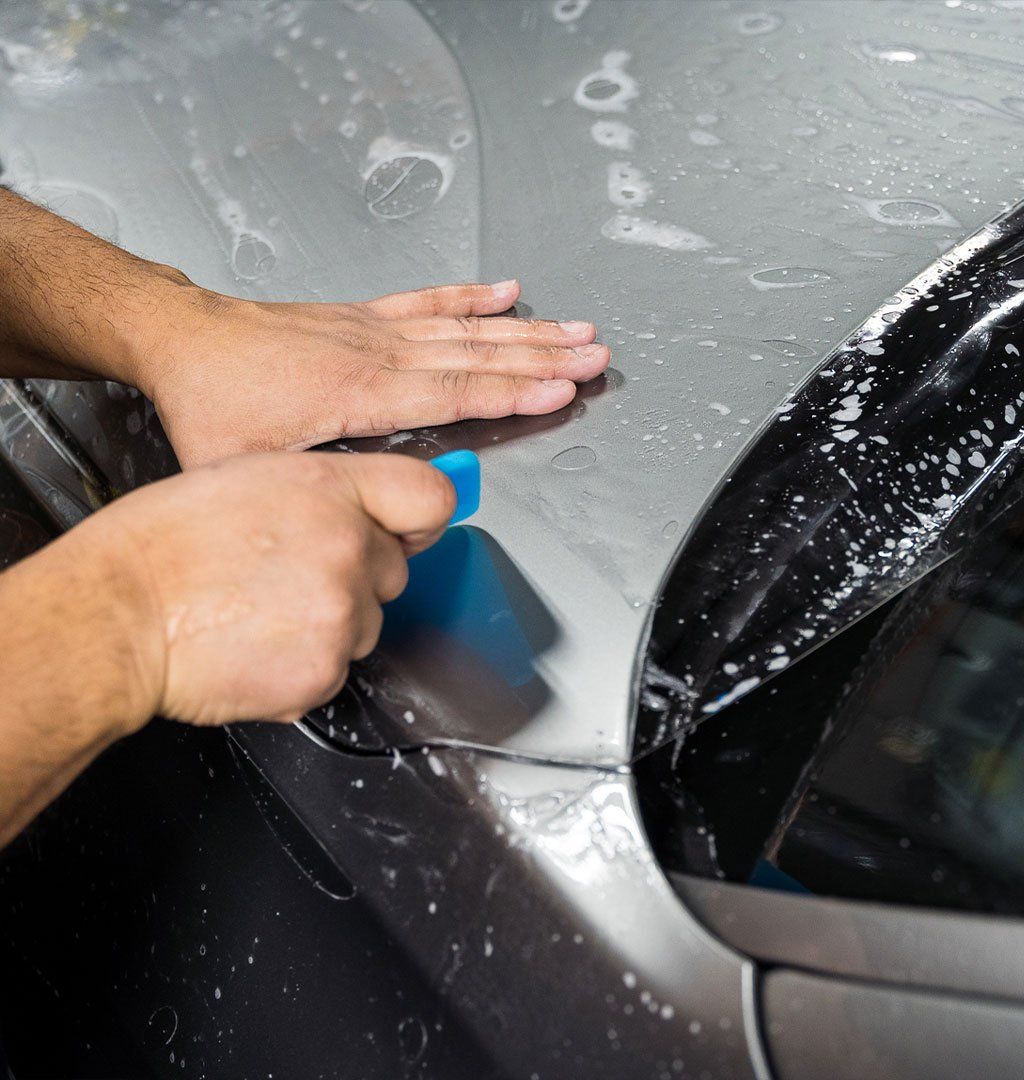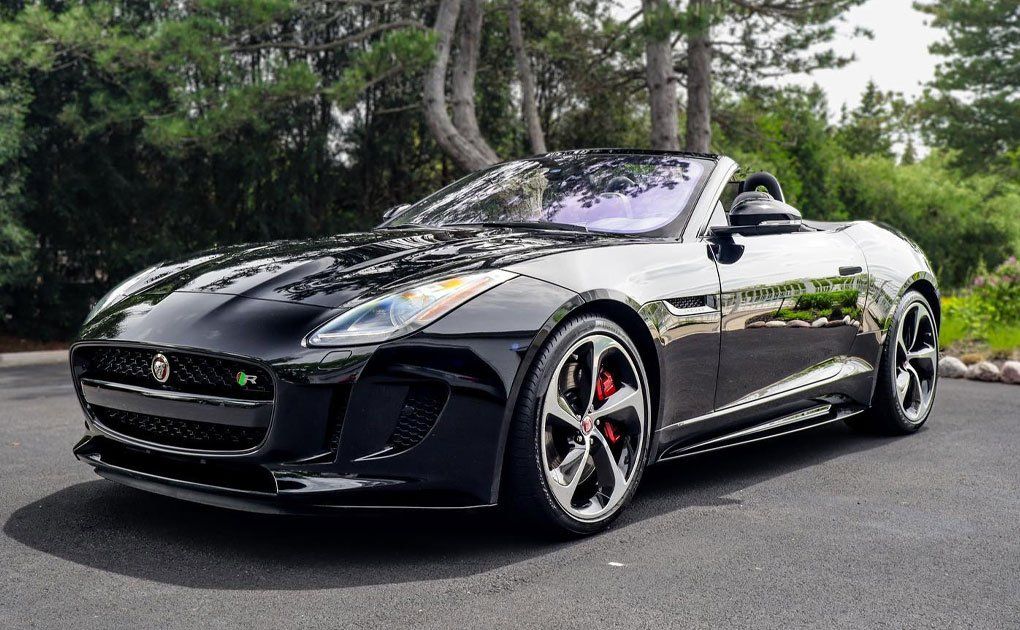The Ultimate Guide: How to Spot Quality Paint Protection Film for Your Car
CALL (708) 574-8496
GET A FREE ESTIMATEChoosing the right paint protection film for your car is crucial in keeping its paint spotless and protected against everyday hazards. This decision hinges on several key factors, from film thickness to self-healing capabilities, all of which can profoundly impact your vehicle's appearance and longevity. Whether you've seen firsthand how an inferior film yellows over time or heard tales from fellow car enthusiasts at shows, you know that every detail counts.
Quality paint protection film should exhibit superior clarity and transparency, possess self-healing properties to address minor scratches, offer UV resistance to prevent discoloration, and provide durable protection against wear and tear. When considering paint protection film, it's crucial to prioritize these attributes to ensure long-lasting and effective coverage for your vehicle's paint.
Identifying A Quality Paint Protection Film
When choosing a paint protection film for your car, it's crucial to ensure that you're getting the best value for your money. The first thing to look for is the thickness of the film, which typically ranges between 8 mils (203 microns) and 9 mils (229 microns), striking a balance between protection and ease of installation.
Thin films may offer less visible coverage but compromise on protection, while overly thick ones can be challenging to install, especially on vehicles with complex curves. Therefore, finding the ideal thickness is essential for optimal protection without compromising ease of application. Top-quality brands are known for producing films within the ideal thickness range, utilizing advanced technologies and materials to provide an exceptional balance between protection and flexibility.
Additionally, consider the clarity and transparency of the film; a high-quality paint protection film should be nearly invisible when applied correctly. Compromised clarity and transparency can significantly detract from the aesthetic appeal of your vehicle. Moreover, look for self-healing properties in the film, allowing minor scratches and swirl marks to vanish when exposed to heat or sunlight, maintaining the flawless appearance of your vehicle without frequent touch-ups or repairs. Reputable paint protection film brands might even demonstrate this self-healing capability through video or clear documentation, validating their product's effectiveness.
Lastly, pay attention to the warranty period provided by the manufacturer. Warranties lasting from 5 to 10 years are common in high-quality paint protection films, signaling the manufacturer's confidence in the product's durability. By considering these factors—film thickness, clarity and transparency, self-healing properties, and warranty—you can confidently identify a premium paint protection film that will safeguard your car's paint and preserve its aesthetics for years to come.
Key Attributes to Consider
Choosing the right paint protection film for your car can feel like navigating a maze. But fear not; we're here to sift through the complexities and zero in on the attributes that truly matter.
- Clarity and Transparency: A high-quality paint protection film should be virtually invisible when applied correctly, ensuring it doesn't compromise your car's aesthetic appeal. Picture this: it's like a protective shield that's there without actually appearing to be there. Imagine enjoying an unobstructed view of your car's beautiful paint underneath while knowing it's being safeguarded from the unseen threats lurking on the road. When it comes to clarity and transparency, it's like seeking out a superpower for your car—one that provides protection without altering its appearance.
- Self-Healing Properties: Imagine having a paint protection film with self-healing abilities, much like a superhero with rapid regeneration powers. Top-tier paint protection films boast this incredible feature, allowing minor scratches and swirl marks to vanish as if they never existed. Think of it as a magical cloak that erases blemishes caused by everyday wear and tear. In essence, self-healing properties serve as a safety net for your car, providing an extra layer of defense against the inevitable nicks and scratches encountered during regular use. It's almost like having an invisible army of tiny repairmen working tirelessly to maintain your car's flawless exterior.
- UV Resistance: As vehicles spend ample time under the sun, UV resistance becomes paramount for a quality paint protection film. This attribute acts as a reliable barrier against the harmful effects of UV rays, preventing both the film and your car's paint from succumbing to discoloration. Much like sunscreen shields your skin from UV damage, UV-resistant paint protection film shields your car from premature aging due to sun exposure.
Installation Process Overview
Installing paint protection film on your car is a meticulous task that demands attention to detail and a controlled environment. Let's take a closer look at each step of the installation process to understand what goes into ensuring that your car's paint receives the best possible protection.
Surface Preparation
Applying a paint protection film to a vehicle is like giving it a delicate shield against scratches and stains. But just like any shield, it needs a clean surface to adhere properly. So, before anything else, the car's surface needs to be meticulously cleaned and decontaminated to ensure the film adheres well without trapping dirt or air bubbles. Think of it as preparing a canvas before creating a masterpiece—every imperfection that remains can affect the result. The first step involves washing the entire vehicle with automotive soap and water to remove any dirt, dust, or grime that could interfere with the film's adhesion. Once this is done, a clay bar is used to remove any embedded contaminants, such as tar or industrial fallout, from the surface. This ensures that no particles compromise the film's ability to form a strong bond with the car's paint.
Controlled Environment
When applying paint protection film, the environment matters—it should be just right. It's like baking a perfect cake; you need the conditions to be ideal. Installing the film in a clean, controlled environment free of dust and direct sunlight is crucial to preventing imperfections. Imagine trying to do delicate surgery in a dusty room—not an ideal scenario. A controlled environment minimizes the risk of dust particles settling on the adhesive side of the film during application. Direct sunlight can cause the film to prematurely adhere, making repositioning difficult. Therefore, professionals recommend installing paint protection film in an indoor environment with proper ventilation and minimal airborne contaminants.
Application Tools
The tools of the trade for paint protection film installation are simple yet essential. These tools ensure that the film is applied smoothly and accurately, without any wrinkles or imperfections. A squeegee, slip solution (soapy water), and a heat gun are indispensable for seamless application. The slip solution helps position the film correctly before it adheres, while the heat gun aids in conforming the film around complex curves and edges. The slip solution acts as a lubricant, allowing installers to adjust the position of the paint protection film on the vehicle's surface until they achieve precise alignment before using the squeegee to remove excess liquid and air bubbles. The heat gun helps soften the film, making it pliable enough to ease around intricate areas without compromising its durability.
Professional Installation
While some may attempt DIY (do-it-yourself) installations, entrusting your paint protection film application to a professional installer ensures proper application without bubbles, wrinkles, or misalignment. This becomes especially critical when dealing with vehicles featuring complex curves and body lines where precision is paramount. Professional installers possess expertise in handling paint protection film materials and have honed their techniques through extensive experience. They know how to mitigate potential challenges specific to different vehicle models and ensure that every inch of the paint protection film adheres seamlessly without compromising its protective properties.
Understanding each step in the installation process provides insight into why professional installation is highly regarded for achieving flawless results without compromising the effectiveness of high-quality paint protection films.
Choosing the Right Film for Your Car
When selecting a paint protection film for your vehicle, several factors need to be considered. Each car has unique needs, so there isn't a one-size-fits-all solution. It's crucial to assess the specific requirements and features of your vehicle. For example, high-impact areas such as bumpers and hoods will benefit from a thicker film for better protection.
Moreover, for cars with intricate curves or unique body designs, it's essential to choose a film that is flexible and conforms easily to these contours. This ensures easier application and a seamless finish without compromising on protection. Thicker films offer enhanced defense against impacts, making them well-suited for vulnerable areas prone to scratches and chips. For instance, if you drive a sports car with a low front end, it's more susceptible to damage from curbs, road debris, and speed bumps. In this case, opting for a heavier-gauge film would be ideal, as it provides an added layer of defense against potential damage in these high-risk zones.
Another crucial aspect of choosing the right film is seeking recommendations from trusted sources and analyzing product reviews. This can provide valuable insights into the reliability and performance of different paint protection film brands in real-world driving conditions. If you want peace of mind when shopping for paint protection film, don't hesitate to seek advice from reputable installers or consult with car clubs and online forums dedicated to car care and maintenance.
In summary, choosing the right paint protection film involves understanding your vehicle's specific requirements and performance attributes alongside considering recommendations from trusted sources. With careful consideration, you can select a reliable film that not only offers excellent protection but also maintains the aesthetics of your vehicle over time.
Evaluating Film Performance
When evaluating the quality of paint protection film for your car, two key performance metrics stand out: tensile strength and peel strength. These characteristics play a vital role in determining the overall durability and effectiveness of the film in protecting your vehicle's paint.
Tensile strength is a measure of how much force can be applied to stretch or tear the film. A higher tensile strength means the film can endure impacts, preventing scratches or damage to your car's paint. This ensures that the film remains intact and continues to shield your car's surface from potential harm. Moreover, peel strength reflects the adhesive quality of the film and its ability to stay firmly attached to your car over time. High peel strength guarantees that the film won't start peeling off at the edges or corners after being exposed to environmental elements, ensuring long-lasting protection.
These attributes aren't just random numbers but are indicative of real-world protection. They dictate how well the paint protection film will defend your vehicle with resilience and staying power. To ascertain the quality of these performance metrics, look for independent test results and certifications that validate these crucial attributes. Reliable manufacturers often provide this data, demonstrating their commitment to transparency and providing consumers with concrete evidence of their product's capabilities.
Think of these performance metrics as safety certifications for cars—you'd want a vehicle with excellent crash test ratings to ensure it can protect you in case of an accident. Similarly, high tensile and peel strength ratings certify that the paint protection film can protect your car from everyday threats and maintain its integrity over time. By carefully examining these key performance indicators and seeking reputable certifications, you can confidently determine which paint protection films offer superior durability and long-lasting safeguarding for your valuable vehicle.
Maintenance Tips for Longevity
So, you've invested in a quality paint protection film for your car. Congratulations! Now, let's talk about how to make sure it lasts as long as possible. With just a little care and attention, you can keep your PPF performing at its best for years to come. Here are some key maintenance tips to help you get the most out of your investment.
- Regular Cleaning: Keeping your paint protection film clean is crucial to maintaining its functionality and appearance. Washing your car routinely with a mild soap solution is the first step. This helps remove dirt, grime, and other contaminants from the surface of the film, preventing buildup that can degrade the film over time. This is not only beneficial for keeping your car looking pristine but also protects the film from potential damage caused by environmental elements.
- Avoid Harsh Chemicals: It's important to note that using harsh or abrasive cleaners on your paint protection film can do more harm than good. These substances can damage the film's protective layer and compromise its self-healing properties. Rough waxes or polishes can create micro-scratches on the film's surface, affecting its clarity and transparency. Stick to cleaning products specifically designed for paint protection film to ensure safe maintenance without compromising its integrity.
- Inspect for Damage: Regularly inspecting your paint protection film for any signs of wear or damage is a proactive way to ensure its longevity. Look out for scratches, chips, or edge lifting, as addressing these issues promptly can prevent them from worsening. By catching these problems early, you can take corrective measures such as applying touch-up solutions or consulting a professional installer when necessary.
- Reapply Protective Coatings: To bolster the protection and maintain the performance of your PPF, consider reapplying protective ceramic coatings or sealants designed specifically for this purpose. These specialized products help add an extra layer of defense against environmental elements while preserving the film's clarity and self-healing properties. Remember: proper maintenance not only enhances the durability and effectiveness of your paint protection film but also protects your vehicle's paintwork underneath.
For tailored product recommendations and comprehensive maintenance guides specific to your type of paint protection film, make sure to visit our website, where expert insights await you! Taking care of your car's paint protection film is a small effort that yields significant rewards in terms of both aesthetics and long-term preservation. With these simple yet effective practices, you're well on your way to ensuring your investment stands the test of time.
Top-Tier Paint Protection Film Experts in Carol Stream, IL
Trust the top-tier paint protection film experts at D’Andrea Auto Detailing in Carol Stream, IL, to safeguard your vehicle's finish with unmatched precision and care. Our skilled technicians use premium PPF materials that protect your car from road debris, scratches, and the elements while maintaining its flawless appearance. With our meticulous installation process, you can be confident your vehicle is receiving the highest level of protection without compromising its original look. Choose D’Andrea Auto Detailing to ensure your car stays in pristine condition for years to come. Call us at (708) 574-8496 to get started!





